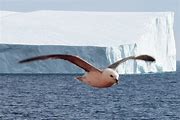Adélie penguins, with their dapper black and white tuxedos, waddle along the icy shores of Antarctica. These fascinating creatures play a crucial role in the delicate balance of the Antarctic ecosystem. But have you ever wondered how something as seemingly unglamorous as penguin poop could be so important?
Picture this: vast colonies of Adélie penguins huddled together on rocky cliffs, breeding and raising their young amidst harsh Antarctic conditions. As these penguins go about their daily lives, they leave behind more than just footprints in the snow – they leave a trail of nutrient-rich guano, aka poop.
In the grand scheme of things, penguin poop might not sound glamorous, but it serves as a vital source of nutrients for the surrounding environment. The high concentration of nitrogen and phosphorus in guano acts as a natural fertilizer that nourishes the soil and promotes the growth of algae and plankton in the ocean.
Expert biologist Dr. Maria Lopez explains,
“Penguin guano is like nature’s own superfood for Antarctica. It kickstarts a chain reaction that fuels life in this extreme environment.”
This cascade effect begins with algae feeding on nutrients from penguin poop, which then attracts krill – tiny shrimp-like creatures that form the base of the Antarctic food web.
The importance of penguin guano goes beyond just fertilizing the land and sea; it also influences carbon sequestration. When krill consume algae nourished by penguin poop, they become part of a carbon sink when they die and sink to the ocean floor. This process helps remove carbon dioxide from the atmosphere, playing a role in mitigating climate change.
Furthermore, researchers have found that studying penguin guano can provide valuable insights into historical environmental changes in Antarctica. By analyzing layers of sediment cores containing traces of ancient penguin feces, scientists can unravel past climate patterns and understand how ecosystems have evolved over time.
Dr. Jonathan White, an environmental scientist specializing in polar regions, emphasizes this point:
“Penguin guano offers us a window into Antarctica’s past. It holds valuable clues about how this continent has responded to environmental shifts throughout history.”
So next time you think about those adorable Adélie penguins braving the icy winds and freezing temperatures of Antarctica, remember that their humble contributions – in the form of smelly but significant poop – are essential for sustaining life in one of Earth’s most pristine yet challenging environments.








Leave feedback about this